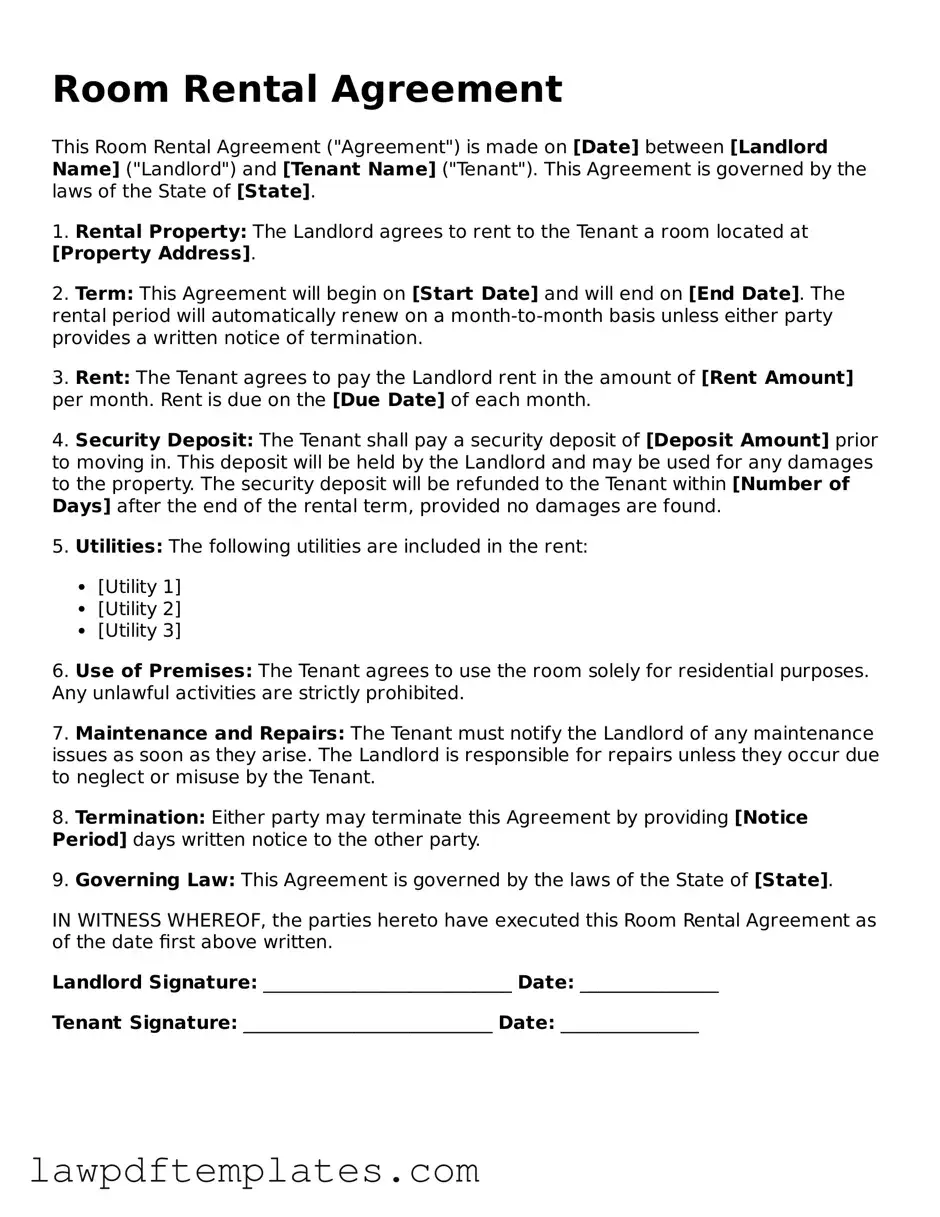Room Rental Agreement
This Room Rental Agreement ("Agreement") is made on [Date] between [Landlord Name] ("Landlord") and [Tenant Name] ("Tenant"). This Agreement is governed by the laws of the State of [State].
1. Rental Property: The Landlord agrees to rent to the Tenant a room located at [Property Address].
2. Term: This Agreement will begin on [Start Date] and will end on [End Date]. The rental period will automatically renew on a month-to-month basis unless either party provides a written notice of termination.
3. Rent: The Tenant agrees to pay the Landlord rent in the amount of [Rent Amount] per month. Rent is due on the [Due Date] of each month.
4. Security Deposit: The Tenant shall pay a security deposit of [Deposit Amount] prior to moving in. This deposit will be held by the Landlord and may be used for any damages to the property. The security deposit will be refunded to the Tenant within [Number of Days] after the end of the rental term, provided no damages are found.
5. Utilities: The following utilities are included in the rent:
- [Utility 1]
- [Utility 2]
- [Utility 3]
6. Use of Premises: The Tenant agrees to use the room solely for residential purposes. Any unlawful activities are strictly prohibited.
7. Maintenance and Repairs: The Tenant must notify the Landlord of any maintenance issues as soon as they arise. The Landlord is responsible for repairs unless they occur due to neglect or misuse by the Tenant.
8. Termination: Either party may terminate this Agreement by providing [Notice Period] days written notice to the other party.
9. Governing Law: This Agreement is governed by the laws of the State of [State].
IN WITNESS WHEREOF, the parties hereto have executed this Room Rental Agreement as of the date first above written.
Landlord Signature: ___________________________ Date: _______________
Tenant Signature: ___________________________ Date: _______________
